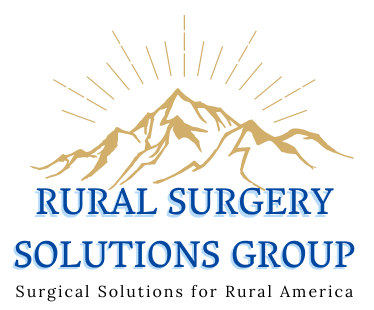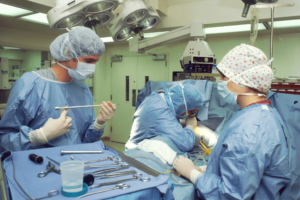According to the AHA, there are over 6100 hospitals in the United States – of which approximately 1840 are designated as rural / critical access hospitals (CAH) that offer essential access to emergency services, inpatient, and outpatient care throughout the US. Unfortunately, the financial struggles of these facilities have been well documented as year after year multiple facilities close. Specifically, over the last decade, 95 rural hospitals closed – with 32 being CAH.
During the 2020 NHRA’s National Policy Institute Conference, The Chartis Group presented that 47% of rural hospitals were operating at a financial loss. Wow – that’s nearly half of front-line healthcare centers in America teetering on having to close their doors or make other difficult decisions. A closer look at their data reveals that they identified 9 factors that are causally linked to the financial stability of these hospital. Of these, four (case mix index, occupancy %, outpatient revenue %, and change total revenue %) are related to the presence or lack thereof of a surgery service line in the hospital.
Rural hospitals have mission statements that clearly state their commitment to providing quality healthcare to their community – yet far too often, these healthcare facilities are resigned to only provide inpatient care, laboratory/radiographic studies, and ED services – even though the facility is equipped with surgical suites, staffed with OR personnel, and have credentialed anesthesia providers on staff. These hospitals unfortunately become the healthcare facility for only Medicare, underinsured, and uninsured populations as the commercially insured patients choose to receive their medical care outside of the community in which the live. Without the professional fees and facility reimbursements from revenue generating service lines, these hospitals often become relegated to “glorified nursing homes” – which falls far below their mission statement, plant capabilities and community expectations.
Hospital executives spend endless hours and attend national conferences seeking to address these questions and financial concerns. Case studies have demonstrated the numerous avenues by which rural hospitals lose revenue – specifically the transfer of patients and the lack of specialty service lines. The inability of the rural hospitals to treat “facility appropriate” patients has undoubtably contributed to the above listed closure rate and current financial status of the 47% of hospitals currently operating at a deficit. Key stakeholders within the rural facility understand the Chartis Group report is accurate – but the cost of a surgery program serves as a real impediment to the hospital taking the steps necessary to become financially stable. The cost of adding a surgery program – even with the overwhelming data supporting it – often leads many facilities to decide, “we just can’t afford a general surgery program!”
Below in Figure #1 is a snapshot of a CAH that recently explored adding a general surgery program to their core service line. The hospital was faced with significant financial difficulties and predicted long-term budget shortfalls. They were aware of the high number of transfers from the ED as well as the decreasing admission rate to the ward but the loss of this significant reimbursement for these facility appropriate “bread and butter” general surgery cases was staggering, unexpected, and unnecessary. This rural facility was built to provide surgical care to its citizens – and was staffed with OR personnel, anesthesia providers (OB services), and appropriate clinic space – yet building a general surgery program was thought to be cost prohibitive. (This chart shows only the potential revenue lost from CMS patients and does not include potential loss of commercial insurance and other payor sources.)
Figure 1
| Critical Access Hospital | |
| Population | 7,900 |
| Primary Care Providers | 6 |
| Facility Medicare Case Loss | 430 |
| Facility Medicare Financial Loss | $1.85M |
| Reg. Facility Medicare Case Loss | 2,900 |
| Reg. Facility Medicare Financial Loss | $9.6M |
| # of Lost Cases | Lost Medicare $ | |
| Colonoscopy | 200 | $731K |
| EDG | 135 | $237K |
| Cholecystectomy | 22 | $261K |
| Appendectomy | 9 | $52K |
| Hernia Repair | 26 | $256K |
| Totals: | 392 | $1.43 Million |
The data listed above provided to hospital leadership as clear and substantial proof that a general surgery program would not only help fulfill their mission statement but financially would create a significant revenue stream that would strengthen the financial bottom line of the hospital. For rural hospitals, the potential expense of starting a surgery program could be daunting. One mistake could have a deleterious effect on the stability of the entire hospital. Capital cost, surgeon recruitment and retention, and program development are legitimate concerns that require careful deliberation but not a reason to not move forward.
Over the last decade, the rural surgicalist model has evolved into a new approach of helping rural facilities add this critically important service line. Currently, there are industry leaders building full-time and custom part-time general turnkey surgery program that addresses the clinical needs of the rural community and the financial concerns of the hospital. The rural surgicalist program can virtually eliminate the concern of long-term contracts, unproductive surgeons, and unrecoverable expenses – while developing a high quality, long term, revenue generating service line for your facility.
If you are one of the 47% of rural facilities discussed above and looking for a proven solution to address your hospital financial revenue – contact an industry leader in rural surgery and let them show you why “You can’t afford NOT to have a general surgery program.”
G McClain, MD




